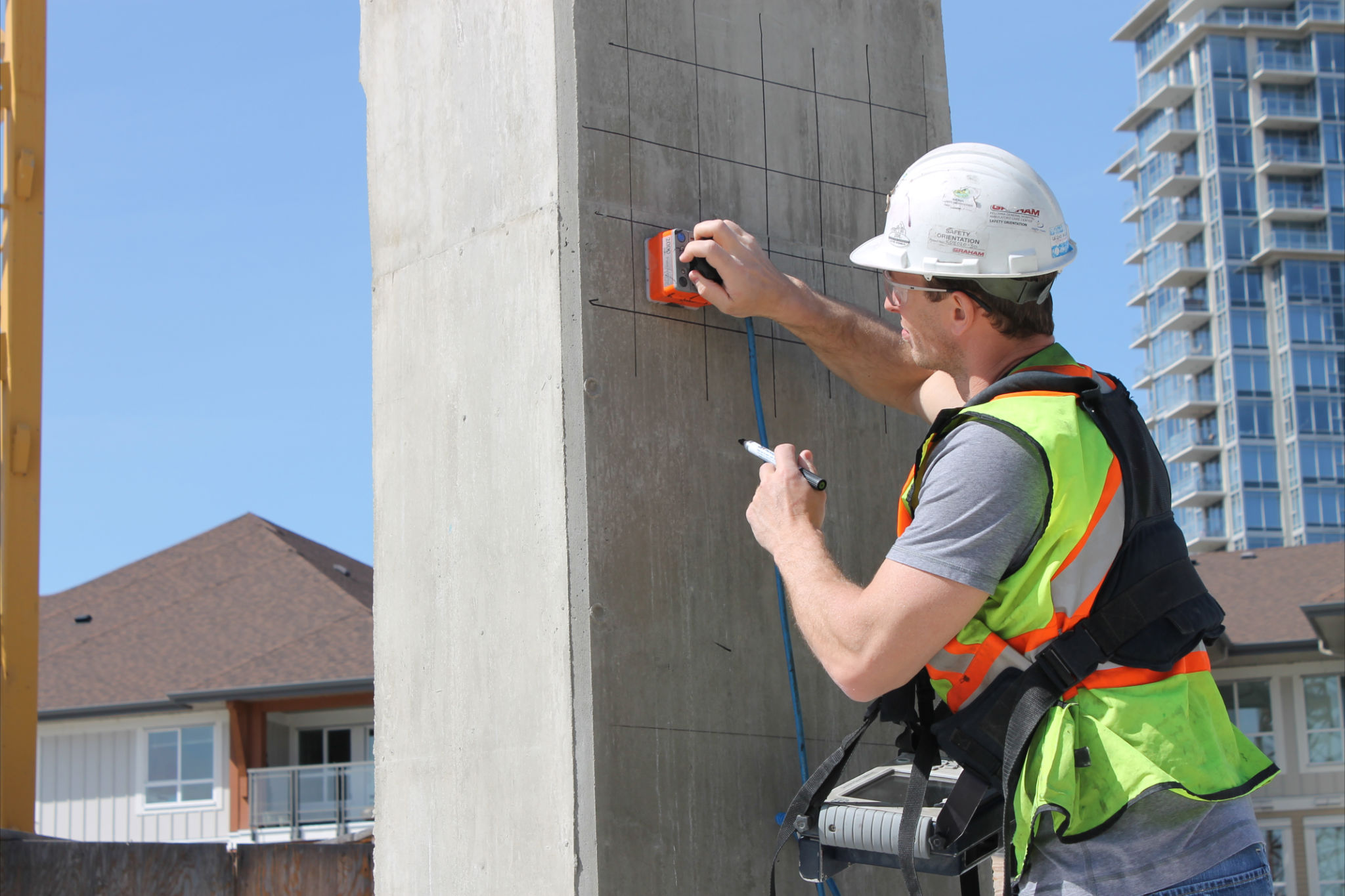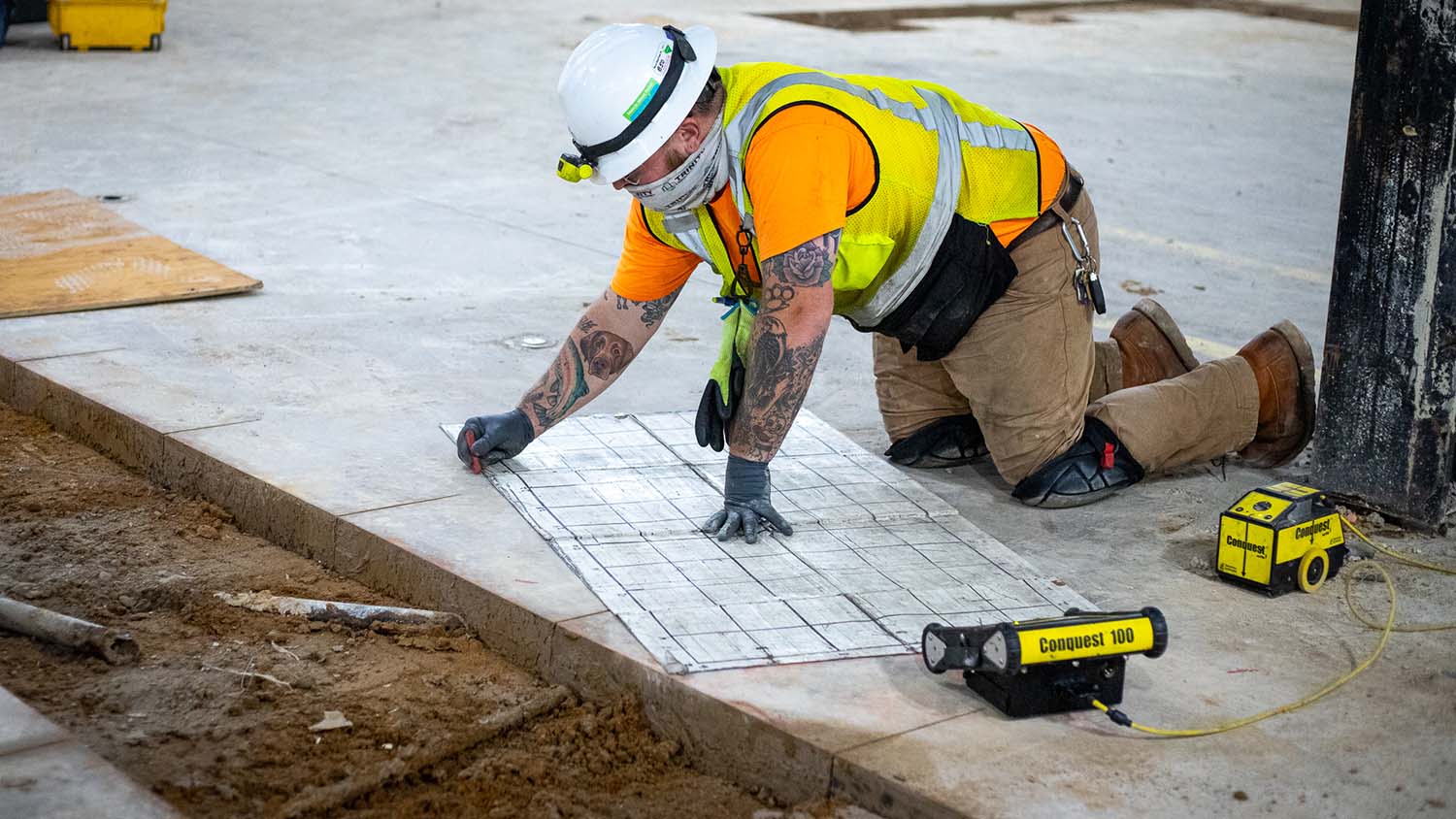Exploring the Depths: A Comprehensive Overview to Concrete Scanning and Its Diverse Applications
In the realm of construction and infrastructure growth, the precise procedure of concrete scanning holds a crucial role in making certain the architectural integrity and safety of projects. As innovation remains to evolve, the applications of concrete scanning have increased much past mere surface-level evaluations. From discovering rebar and post-tension cables to mapping out voids and channels concealed within concrete structures, the capacities of modern-day scanning methods are both important and remarkable. The true deepness of concrete scanning's possible reaches even further, branching right into unanticipated sectors and stimulating cutting-edge options. The interconnected internet of possibilities that concrete scanning provides is not just remarkable yet also crucial for the innovation of different markets.
Importance of Concrete Scanning
Comprehending the importance of concrete scanning is crucial in making sure the safety and integrity of structures throughout building and construction and remodelling jobs. Concrete scanning makes use of sophisticated technologies such as ground-penetrating radar (GPR) and electro-magnetic induction to spot ingrained things, gaps, or various other abnormalities within concrete frameworks - RainierGPR Concrete Scanning. By conducting complete scans before boring, reducing, or coring right into concrete, building groups can stay clear of unexpected damage to crucial architectural aspects like rebar, avenues, or post-tension cords. This positive strategy not just prevents pricey repairs and project hold-ups however additionally enhances general building safety by mitigating the threat of architectural failings or collapses due to jeopardized stability.
Moreover, concrete scanning plays a pivotal role in making sure conformity with building ordinance and guidelines that mandate the defense of existing architectural parts throughout construction activities. By precisely drawing up the internal composition of concrete, scanning technologies enable building experts to make educated decisions that support the structural stability and durability of structures and framework tasks. Essentially, the importance of concrete scanning hinges on its capacity to safeguard both the structural integrity and the employees entailed in building ventures.
Technologies Utilized in Concrete Scanning
Concrete scanning counts on sophisticated innovations such as ground-penetrating radar (GPR) and electromagnetic induction to properly detect ingrained objects and abnormalities within concrete frameworks. Ground-penetrating radar runs by releasing high-frequency electro-magnetic waves into the concrete. When these waves run into different materials or gaps within the concrete, they recuperate to the surface, permitting the GPR system to create a thorough subsurface image. This technology is especially effective in finding rebar, post-tension cable televisions, channels, and other objects embedded in concrete.
Electro-magnetic induction, on the various other hand, functions by creating magnetic fields around a concrete framework through a transmitter coil. When metal things are present within the concrete, they disrupt these electro-magnetic fields, creating eddy currents to move with the metal. By measuring the modifications in the electromagnetic fields with a receiver coil, the system can identify the location of metallic things in the concrete.
These advanced modern technologies play a critical function in non-destructive testing, ensuring the security and honesty of concrete frameworks in various markets.
Applications in Building Market
Within the building sector, concrete scanning innovation locates varied applications that boost task performance and safety. In addition, concrete scanning is used for situating voids, such as air pockets or areas of damage within concrete, which can endanger the total stamina of a framework. Concrete scanning plays an essential duty in quality control by verifying the density of concrete covers over reinforcement, ensuring conformity with style specs and requirements.

Safety Benefits of Concrete Scanning
In the world of construction security, the execution of concrete scanning innovation provides a vital benefit in preemptively identifying prospective threats and strengthening architectural honesty. By making use of sophisticated scanning techniques such as ground-penetrating radar (GPR) and electro-magnetic induction, construction teams can properly situate rebar, post-tension cords, conduits, and other hidden objects within concrete frameworks. This proactive technique considerably reduces the threat of accidental strikes throughout boring, cutting, or coring activities, thus preventing pricey damages, injuries, and project hold-ups.
In addition, concrete scanning improves worker security by providing real-time info regarding the architectural condition of concrete elements. visit our website This data allows building professionals to examine the honesty of existing structures, recognize damage or defects, and make informed decisions pertaining to repair service and maintenance procedures. By attending to potential security issues promptly, concrete scanning adds to producing a secure workplace and mitigating the chance of architectural failings or accidents on building and construction sites. Eventually, the security benefits of concrete scanning not only safeguard lives and possessions yet likewise promote sector criteria for quality and reliability.
Future Patterns in Concrete Scanning
Emerging developments in scanning innovation are poised to reinvent the area of concrete inspection and evaluation. One significant fad that is getting traction is the integration of expert system (AI) and maker understanding algorithms into concrete scanning gadgets. By utilizing the power of AI, these systems can assess substantial quantities of data collected throughout scanning processes to provide even more precise and in-depth insights right into the problem of concrete frameworks. This can aid in spotting hidden defects, predicting possible architectural failings, and even recommending upkeep strategies.
One more substantial pattern is the advancement of even more portable and easy to use scanning devices. Miniaturization of scanning equipment permits simpler access to constrained rooms and remote locations, making examinations more detailed and effective. Additionally, innovations in cordless interaction modern technologies make it possible for real-time data transfer and evaluation, facilitating quicker decision-making procedures.
Furthermore, there is a growing focus on sustainability in concrete scanning innovations - RainierGPR Concrete Scanning. Producers are significantly integrating eco-friendly materials and energy-efficient attributes right into their tools to lower ecological influence. These future trends are readied to enhance the effectiveness, precision, and sustainability of concrete scanning techniques, forming the sector's future landscape
Final Thought
Finally, concrete scanning plays a crucial role in the building and construction industry by ensuring the safety and security and performance of different projects. By utilizing advanced modern technologies, such as GPR and radar imaging, experts have the ability to properly detect possible dangers within concrete frameworks. The applications of concrete scanning are substantial and remain to progress, making it an important tool page for maintaining the honesty of buildings and infrastructure. As technology advances, the future of concrete scanning holds encouraging developments for enhancing construction procedures.
